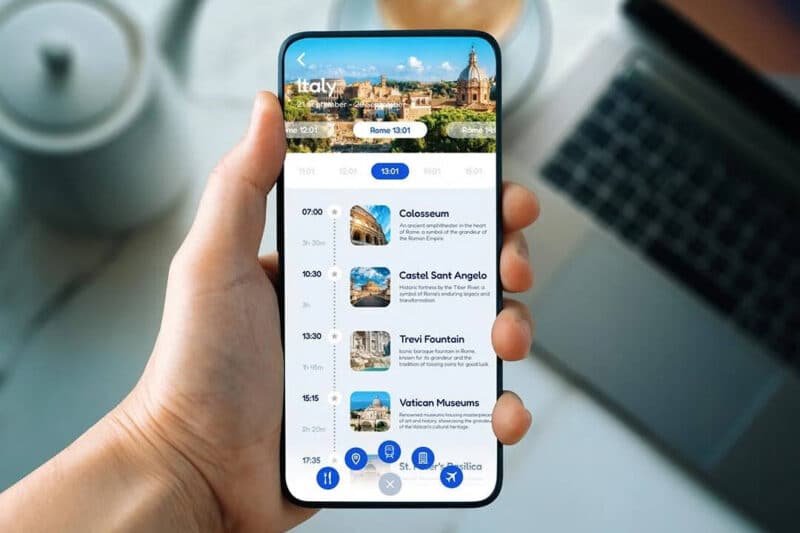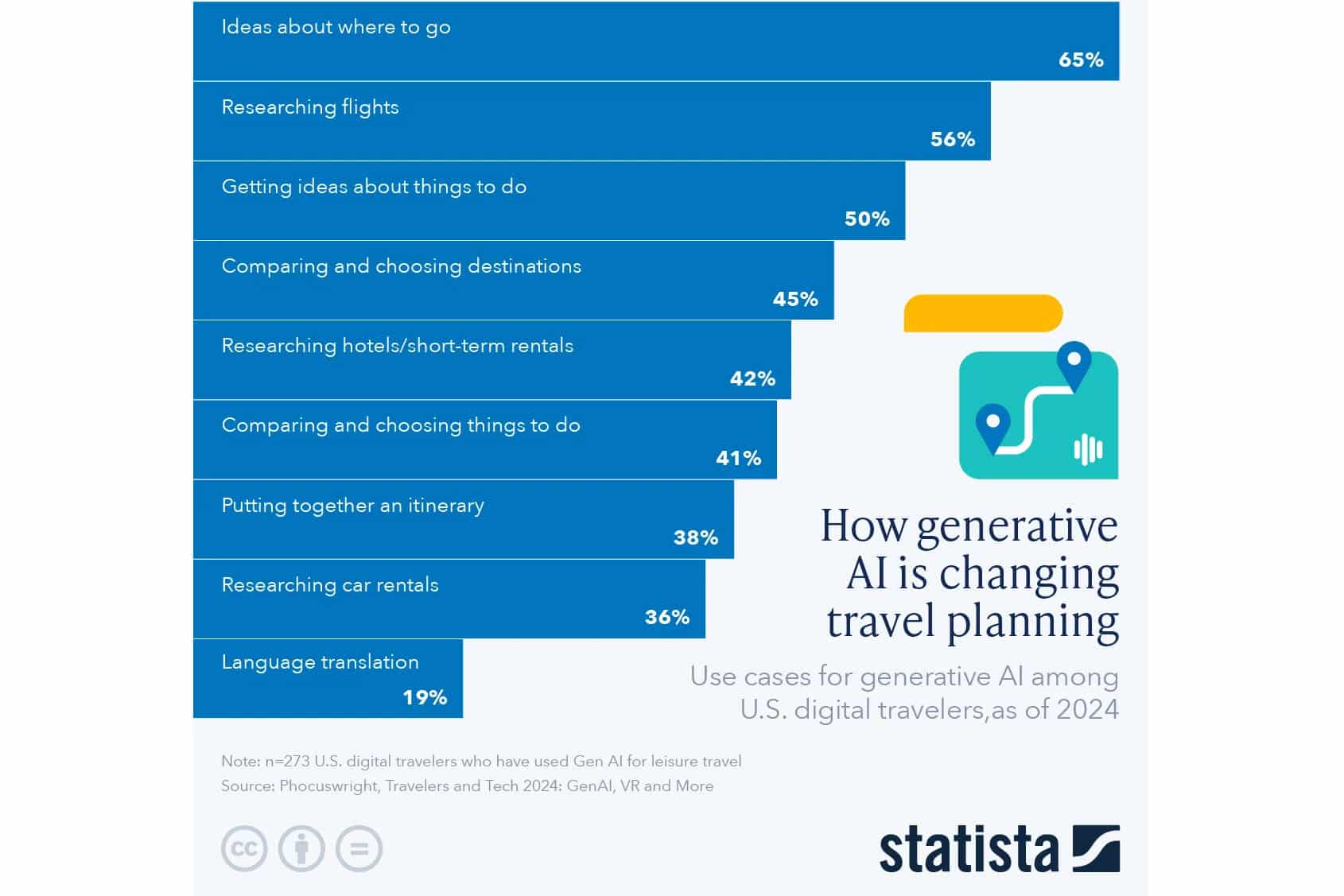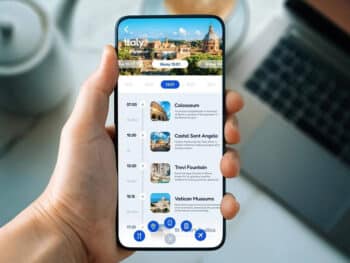Recently, Ghibli-style images have flooded social media from across the globe. While it’s fascinating to see photographs replicated in the Ghibli art style, the images have some thinking about ethics and artistic integrity.
While artificial intelligence plays the villain here, there are other areas of daily life where AI can help make life a little easier, which got the Way.com team wondering about its use for travel planning.
Why?
As much as many of us love travelling, we often dread the planning that unavoidably comes before it. But with the right generative AI for travel planning, one can easily create personalized plans and itineraries. But before we consider whether these tools have what it takes, let’s first understand the basics.
What is generative AI?
Generative AI generates new data from already existing information. The data doesn’t necessarily have to be in the form of websites and written information. The AI tool can derive data from YouTube videos and images, too. It uses machine learning models to learn patterns from existing data and then create new content based on those patterns.
Generative AI for travel planning
AI tools for travel began to emerge around 2023. Online travel agency Expedia released a ChatGPT-powered chatbot on its mobile app in April 2023 that soon became a trailblazer of AI for travel planning.
While many other platforms followed suit, some failed miserably. Nonetheless, AI has changed how we explore the world. Even though many of us were wary about the sudden intervention of technology in travel, many boarded the generative AI train.
With more people now interested in generative AI, more businesses have started integrating it to aid their workflow as well. According to a 2023 IBM survey, 38 per cent of organizations have implemented generative AI into their workflows, while 42 per cent are considering doing so.
Over the short span of two years, AI has evolved so much that now travel agencies are able to provide real-time updates and personalized recommendations to travellers, guiding them through the complex world of travel information. And as many as 8 in 10 travellers are now open to using or actively using AI to organize a holiday.
Uses of AI for travel planning
Now, we know that people are actively seeking out AI tools to plan their vacations. And why would they not? With generative AI and with the right prompt, companies can now create travel suggestions for people tailored to match their unique preferences and interests – or at least claim to do so.
Let’s further explore the use cases of generative AI in travel planning.
Personalized itineraries
According to the Phocuswright Travelers and Tech 2024 report, over 38 per cent of Americans use generative AI to create an itinerary in the initial stages of holiday planning.
Apart from individual preferences and budget constraints, AI also delves into the user’s social media footprint to craft personalized itineraries that resonate with each traveller’s needs and desires.
This system also seamlessly incorporates booking platforms and databases to provide a user-friendly interface for travellers to interact, provide feedback and fine-tune their plans.
Travel updates and recommendations
Not only can these AI travel planning apps give you recommendations that suit your desired location and preferences, but they also provide updated, real-time information regarding the locations, flights and hotels that you are planning to visit. It can suggest alternate routes to avoid traffic, recommend other nearby locations you might be interested in, or adjust plans based on unexpected changes.
Booking assistance
A major share of your travel planning includes booking flights and accommodations, arranging car rentals and making airport parking reservations. And with the plethora of options, it can get quite confusing.
In these situations, generative AI offers immediate and precise support. AI for travel planning furnishes details regarding the prices and helps you book the right flights and hotels as well as help find airport parking spaces that align with your budget. It even allows for the comparison of costs with other alternatives and helps make informed decisions.
Language translation and localization
According to Statista, more than 19 per cent of Americans uses generative AI for language translation when on an international holiday. Generative AI effectively breaks language barriers and facilitates effortless communication, improving communication, safety and cultural interactions.
Some other uses of generative AI in travel planning include:
- Addressing travel concerns through chatbots and virtual assistants
- Efficient communication throughout the journey promoting upgrades and additional service
- Smart shopping
- Personalized travel packing recommendations
- Travel risk assessment and advisory
- Estimating travel expenses
- Post-trip engagement
Here’s a graph of the 2024 International Travelers Survey to help you understand how different travellers across America use AI for travel planning:
Best AI for travel planning
Though generative AI in travel has been a recent phenomenon, it has evolved considerably within two years. Today, many AI tools and services can help plan trips that are catered specifically to our needs.
In assessing some of the many AI tools available, Way.com gave each tool the same prompt, and three emerged as the best by producing decent, comprehensible, immediate itineraries quickly in response to plain language prompts.
It’s important to note that while technology has advanced considerably, these plans best serve as outlines for you to further research, modify and build upon.
Mindtrip
The search for the best AI travel planning tool led straight to Mindtrip. Having been featured across platforms like CNBC and The New York Times, Mindtrip was Way.com’s first choice. Their claims? To make travel planning easier and simpler.
The test prompt given to all the AI tools: Create an itinerary to Hawaii for three days and that includes restaurant suggestions, especially those that specialize in Hawaiian cuisine.
Pros: No matter the result, the ability of AI to pick and choose from several hundred sources in a matter of seconds is mind-blowing. Compared to the other platforms, Mindtrip performed exceedingly well. Not only did it generate an itinerary according to the prompt, it also provided maps with the itinerary. Each recommended destination/restaurant had a link attached to it, which, upon hovering the cursor over it, gave a summary of the place.
Every itinerary and plan in Mindtrip are shareable. You can also always ask for additional concerns and add prompts to existing ones, and Mindtrip will mould them accordingly in a matter of seconds.
Cons: When you give Mindtrip peculiar prompts, it didn’t excel. For instance, asking it to recommend “cool but unusual things to do in Hawaii” along with the itinerary, it reasoned and recommended the same itinerary as before with the usual outdoor activities and famous restaurants.
Vacay – AI for Travel Planning
Way.com’s next choice was Vacay. Unlike Mindtrip, Vacay asks you specific questions before framing an itinerary. It asked about desired destination, duration, interest, budget and number of travel companions before making an itinerary suited for the trip.
Pros: The Vacay chat box is not as fancy as Mindtrip’s. It is simple yet direct, which makes it best for people looking for answers to their prompt only. Another highlight of Vacay is that the itineraries include per-day, per-activity and total budget figures.
The plans are easy to download and copy and are best for creating printable draft plans that you can edit manually as Word or Google documents on the go. Unlike Mindtrip, Vacay was able to recommend some cool activities that can be explored, like taking a Kualoa Ranch Tour and a traditional outrigger canoe ride.
Cons: The simplicity of Vacay backfires at times. Unlike Mindtrip, Vacay doesn’t include maps or web links. So, to modify the itinerary, one will have to give additional input. Yes, you can always ask other queries connected to your itinerary, but those don’t update your original itinerary.
GuideGeek
GuideGeek was an initiative of the travel media brand Matador. This chatbot is available via Facebook, Instagram, and WhatsApp. You can send a message or ask a query to get started. Once it gets the needed information, it comes out with an itinerary
Pros: GuideGeek’s chatbot has its perks. It invites continuous input from the user to improve the plan. Hence, you can always ask for more details, tweaks, and elaborations on the original travel plan. When Way.com tried GuideGeek, it was able to get live web links on request. Even though some of the links experienced a glitch, they are still sufficient as a secondary travel consultant.
Cons: One of its major issues is its inability to work on anything that isn’t a mobile device. While GuideGeek modifies the itineraries according to continuous inputs, the outcome of the plan is divided into random chunks; hence, downloading or copying it can be a hassle. Unfortunately, GuideGeek wasn’t able to provide any “cool and unusual” things to do in Hawaii. Instead, it recommended standard, outdoorsy activities you can engage in.
Final thoughts
Travel has always been about discovery. While some trips help us learn about new, faraway places, others help us learn better about ourselves. And what better time to learn about ourselves and the world than through the technological lens of artificial intelligence?
When it comes to travel planning, generative AI offers a new kind of compass: one that can learn your preferences, adapt to your needs and help you explore the world with less stress and more spontaneity.
This story was produced by Way.com and reviewed and distributed by Stacker.
Plan your adventures throughout the West Coast at westcoasttraveller.com and follow us on Facebook and Instagram @thewestcoasttraveller. And for the top West Coast Travel stories of the week delivered right to your inbox, sign up for our weekly Armchair Traveller newsletter!












 Nelson artist launches new West Kootenay Hiking guide
Nelson artist launches new West Kootenay Hiking guide